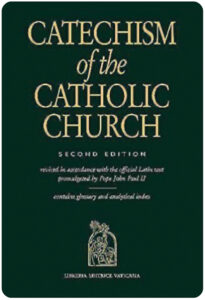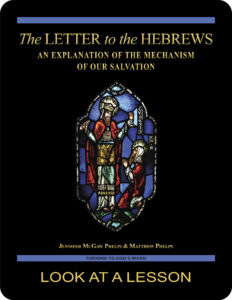Trinity
 The Solemnity of the Most Holy Trinity marks the Church’s celebration of the one God in three persons—Father, Son, and Holy Spirit. Trinity is the word that we use to describe the threefold nature of God.
The Solemnity of the Most Holy Trinity marks the Church’s celebration of the one God in three persons—Father, Son, and Holy Spirit. Trinity is the word that we use to describe the threefold nature of God.
Interestingly, the word Trinity doesn’t actually appear anywhere in the Bible. It’s a word that was created specifically to describe this mystery of God. It comes from the Latin word tres meaning “three.” It forms in the same way that the word unity comes from the Latin word for one, unus. Just as unity describes oneness, the word trinity describes three-ness, a state of being three.
The Christian view of the Most Holy Trinity centers on this idea that God is one and three at the same time. The triple nature of God means that God is three persons in one—the Father, the Son, and the Holy Spirit. In a mystical way that is beyond human comprehension, these three distinct persons are all together one single God. Paragraph 234 of the Catechism of the Catholic Church teaches:
 234 The mystery of the Most Holy Trinity is the central mystery of Christian faith and of life. It is the mystery of God in himself. It is therefore the source of all the other mysteries of faith, the light that enlightens them. It is the most fundamental and essential teaching in the “hierarchy of the truths of faith.” The whole history of salvation is identical with the history of the way and the means by which the one true God, Father, Son, and Holy Spirit, reveals himself to men “and reconciles and unites with himself those who turn away from sin.”
234 The mystery of the Most Holy Trinity is the central mystery of Christian faith and of life. It is the mystery of God in himself. It is therefore the source of all the other mysteries of faith, the light that enlightens them. It is the most fundamental and essential teaching in the “hierarchy of the truths of faith.” The whole history of salvation is identical with the history of the way and the means by which the one true God, Father, Son, and Holy Spirit, reveals himself to men “and reconciles and unites with himself those who turn away from sin.”
The Scriptures show that God revealed his nature to us over time. The Old Testament focuses on God the Father, while the New Testament largely is concerned with the actions of God the Son. Throughout the Bible, we see the Holy Spirit acting in various ways. As we read from a Christian perspective, we should remember that increased revelation about God doesn’t indicate a change in God. The Son and the Spirit were with God from the beginning, and the Father still was acting in the New Testament. It’s useful to keep this in mind as we think about who God is and how the Most Holy Trinity acts in Creation.
How does God in three persons affect your spiritual life? Which of the three persons do you find it easiest to approach in prayer? What are some other mysteries of the Christian faith about which you’d like to know more? Consider asking the Holy Spirit for increased understanding.
you also may like our study of the Letter to the Hebrews (digital only)
 Many Christians struggle to understand one of the central mysteries of our faith: how Jesus can be both human and divine at the same time. The Letter to the Hebrews: An Explanation of the Mechanism of Our Salvation, an 18-lesson Catholic Bible study with an imprimatur, offers an in-depth look at the way in which Jesus’ dual nature allows for the salvation of humanity. The Letter to the Hebrews is designed to provide information that will encourage Christians to remain faithful. Click on the book’s cover to view a sample lesson.
Many Christians struggle to understand one of the central mysteries of our faith: how Jesus can be both human and divine at the same time. The Letter to the Hebrews: An Explanation of the Mechanism of Our Salvation, an 18-lesson Catholic Bible study with an imprimatur, offers an in-depth look at the way in which Jesus’ dual nature allows for the salvation of humanity. The Letter to the Hebrews is designed to provide information that will encourage Christians to remain faithful. Click on the book’s cover to view a sample lesson.
 Click on the picture of the statue of Moses with horns (above) to learn more about Lost in Translation. A new entry is archived each Monday. Contact us to receive Lost in Translation by email every week. You may use any of the contact links on our website to ask Matthew a question.
Click on the picture of the statue of Moses with horns (above) to learn more about Lost in Translation. A new entry is archived each Monday. Contact us to receive Lost in Translation by email every week. You may use any of the contact links on our website to ask Matthew a question.
